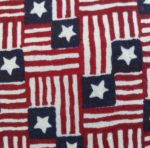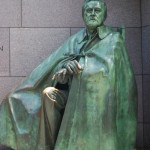 Ratification Day marks the day in 1784 when the Continental Congress ratified the Treaty of Paris, the peace agreement with Britain. The United States officially became an independent country. Thomas Jefferson, chairman of the ratification committee, went through difficult circumstances to get the necessary signatures on the ratification. He needed approvals from nine of the thirteen colonies. However, that winter was extremely brutal, and many delegates struggled to get to Maryland to sign the document. Finally, on January 14th two more delegates arrived, and the minimum nine signatures made the document a real treaty. Three copies of the document were sent on three different ships back to England. Even the journeys to the ships were challenging, and the ocean voyages were unusually difficult.
Ratification Day marks the day in 1784 when the Continental Congress ratified the Treaty of Paris, the peace agreement with Britain. The United States officially became an independent country. Thomas Jefferson, chairman of the ratification committee, went through difficult circumstances to get the necessary signatures on the ratification. He needed approvals from nine of the thirteen colonies. However, that winter was extremely brutal, and many delegates struggled to get to Maryland to sign the document. Finally, on January 14th two more delegates arrived, and the minimum nine signatures made the document a real treaty. Three copies of the document were sent on three different ships back to England. Even the journeys to the ships were challenging, and the ocean voyages were unusually difficult.
Clarinet was invented in Nurnberg, Germany, in 1690. Idea: The music teacher or a child studying the clarinet could perhaps show how the clarinet works. The children could look at other woodwind instruments.

Ford Assembly Line
Henry Ford pushed the button to start the first assembly-line production in 1914. Idea: Ford’s first assembly line made cars. Children could form an assembly line to make ice cream sundaes. One person could be in charge of dishes. Another could add one kind of ice cream. Another could add a different kind of ice cream. A fourth student could top the ice cream with chocolate. Another could spritz on some whipped cream. Still another could add a cherry. Then everyone could eat!

Franklin Roosevelt
Franklin Roosevelt in 1943 became the first President to fly in an airplane. He flew from Miami, Florida, to Morocco to meet with Winston Churchill. He left Miami on January 11 and flew to the Caribbean, then along the coast of South America, and then across the Atlantic Ocean. The return trip took several days because he spent time with military troops.

Saturn and its Rings
Huygens Probe landed on Saturn’s moon Titan in 2005. The successful landing indicated Titan’s surface is covered with a powdery substance. Scientists are still analyzing the data the probe sent back to earth. The Cassini-Huygens mission was a joint venture of the European Space Agency, the Italian Space Agency, and NASA. The mission left earth on October 15, 1997. The Cassini portion continued to send back data about Saturn and remained active until September 15, 2017 when its energy was depleted and it dove into Saturn’s atmosphere, returning data until it was no more. Children can review data and more at: Cassini-Huygens.